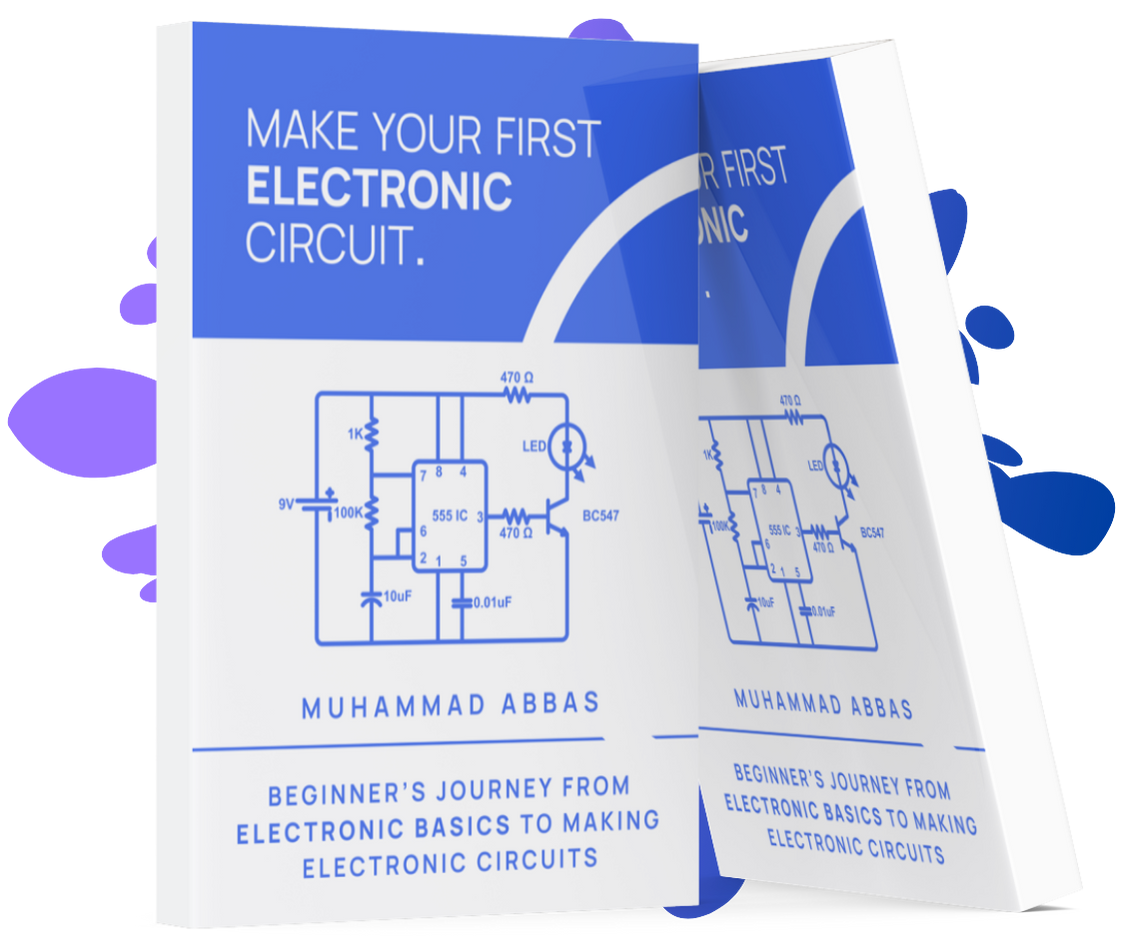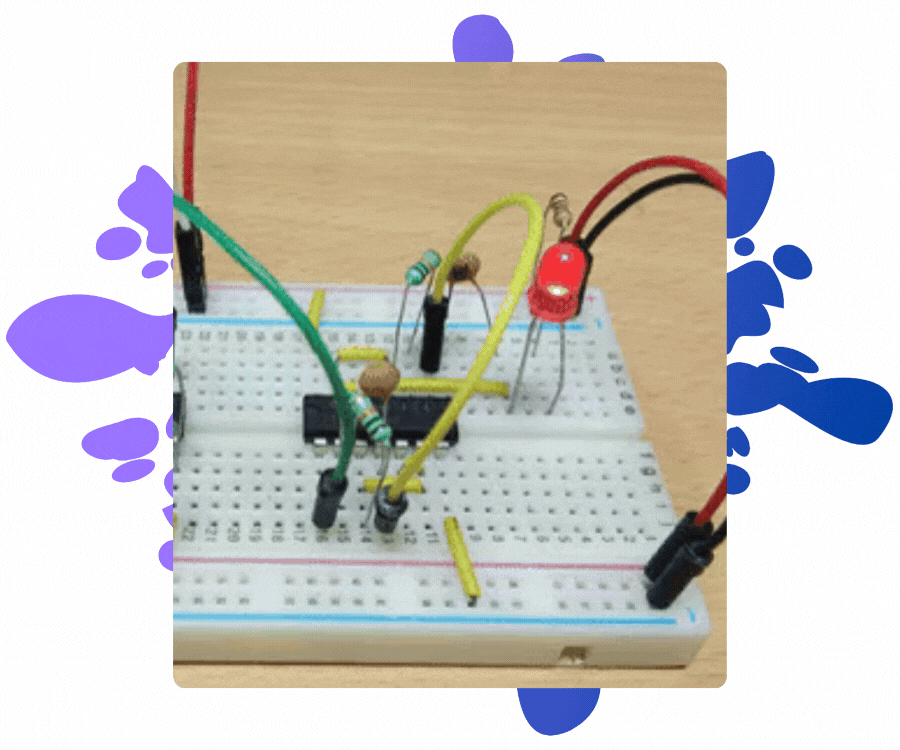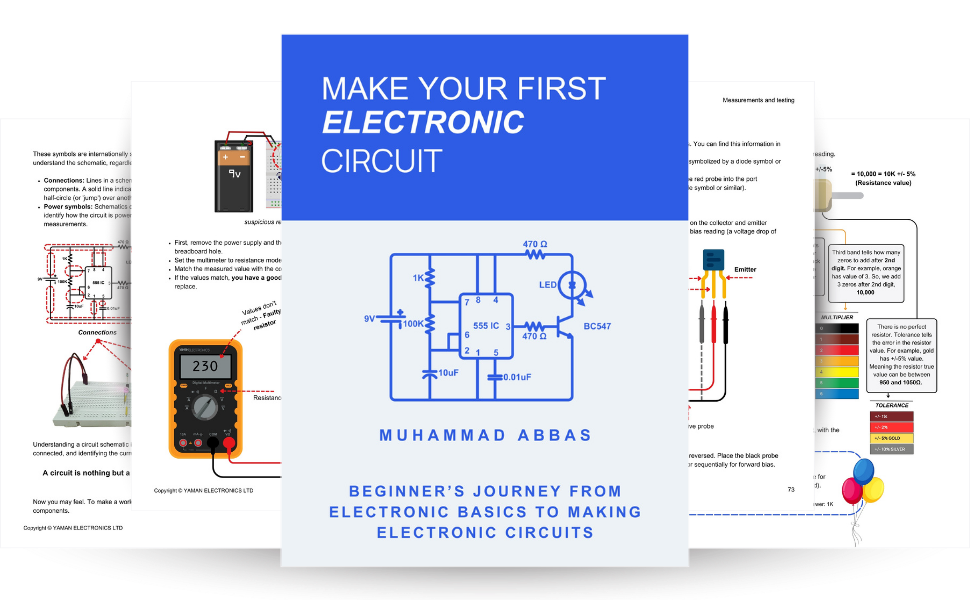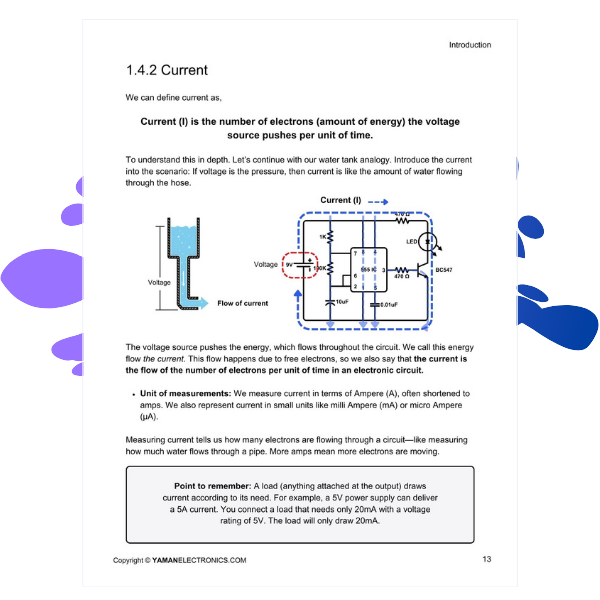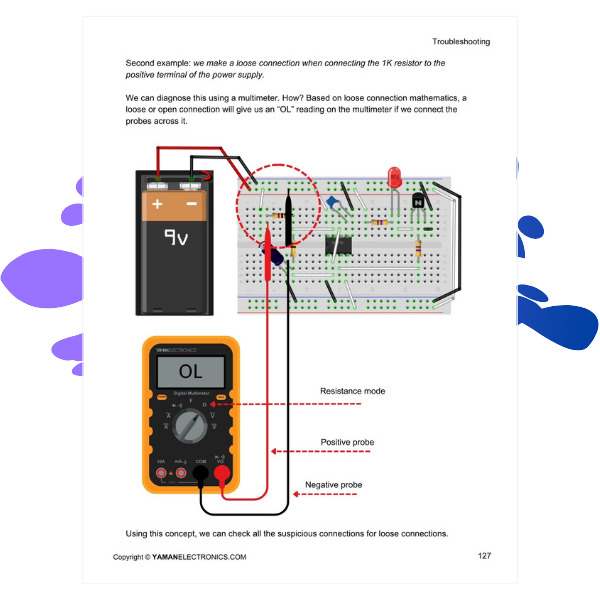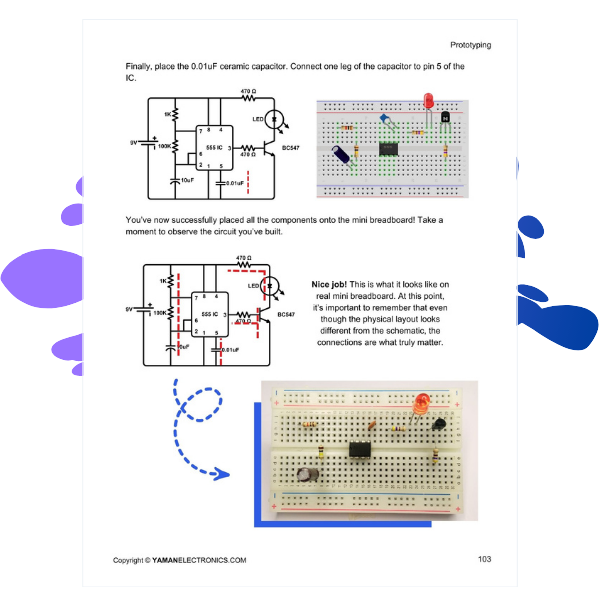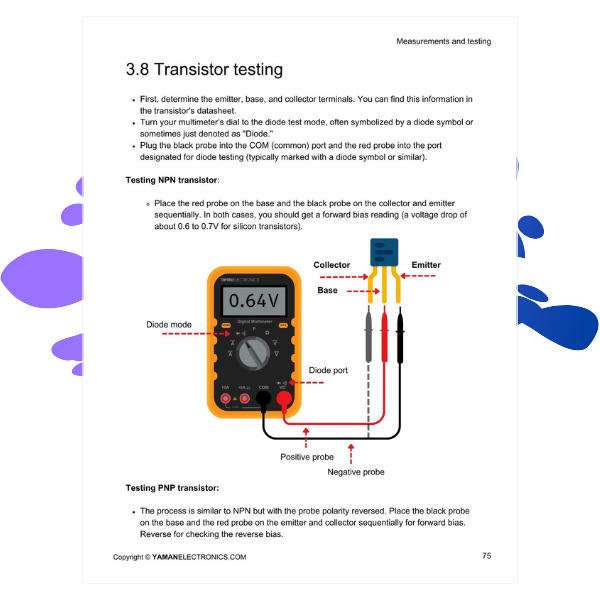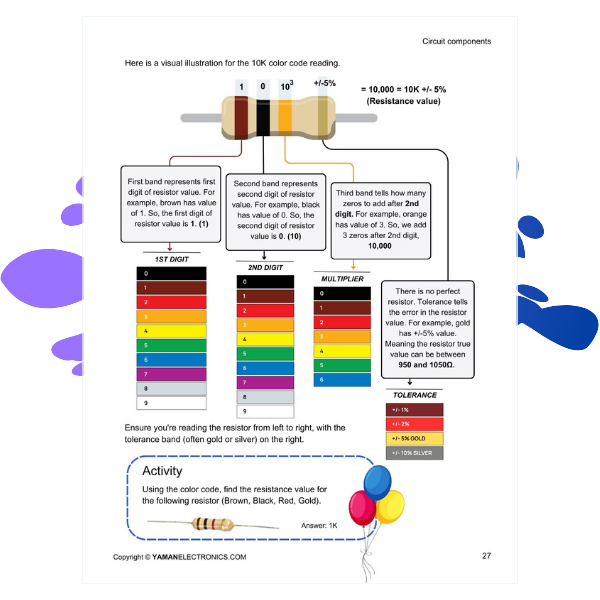Basic electronics book for beginners
Make your First Electronic Circuit
.. even if you don’t have a clue about electronics or confused by too much information. Learn electronics basics step by step and enjoy the joy and satisfaction of making circuit with your own hands – no experience needed!
It is very simple,
To learn electronic BASIcs AND MAKE CIRCUITS, you have to start somewhere
But there’s a problem ..
Does the above resonate with you?
Above problems are probably the factors why 70% of students feel confused about learning electronics. And you know, among the above different factors, the main factor why students feel this way is – too much confusing information.
So, There has to be a Better Solution. Agree?
I have the exact same above issues when I was a student and that is why I wrote
MAKE YOUR FIRST ELECTRONIC CIRCUIT
The step by step book that is designed to teach you electronics basics while you make your first electronic circuit (developing your circuit making skill. It is not a theory book, it is the practical book; the book I wish I had when I didn’t have a clue about electronics.
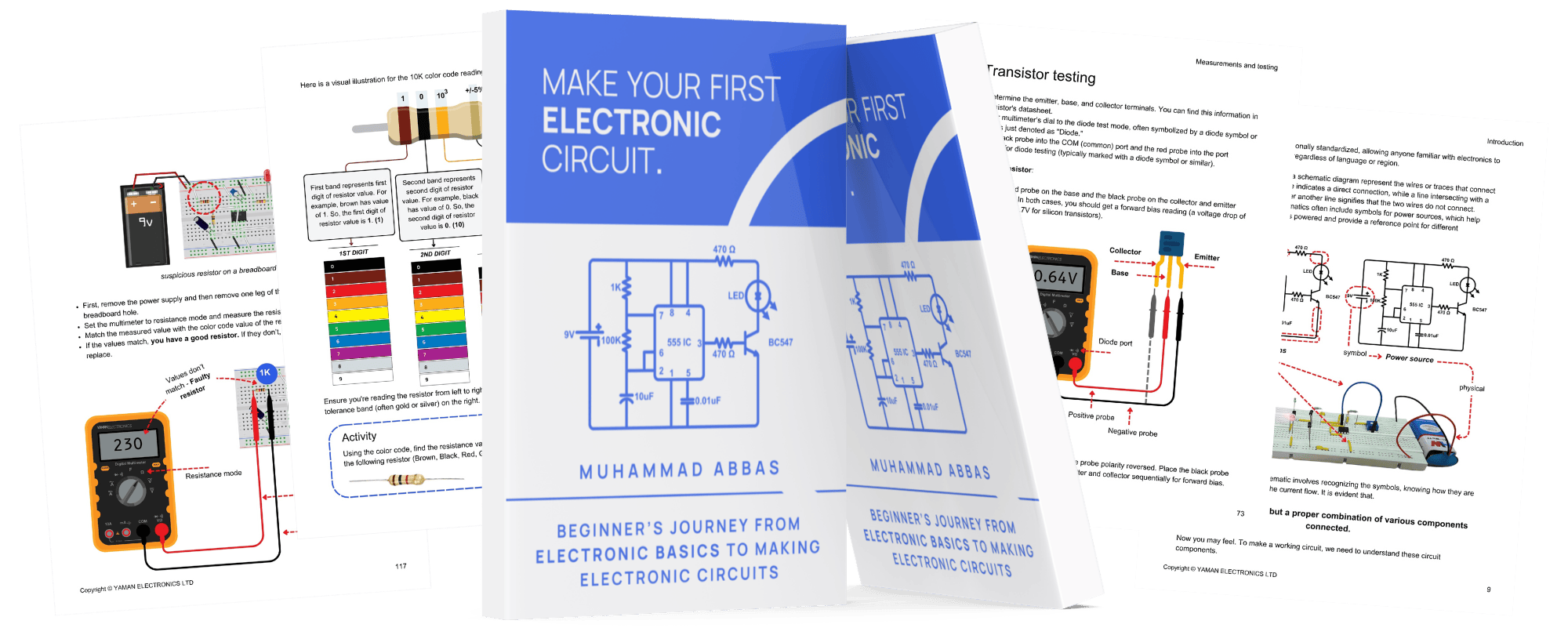
– Four points that makes this book different from all the others –
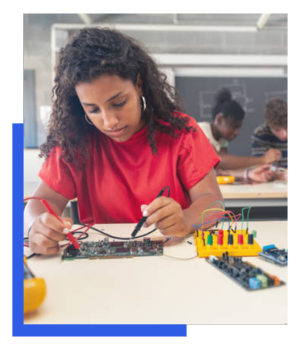
Written for complete beginners
No more overwhelming and confusion. I tried my best to present every topic in a simple possible way, so a complete beginner can understand them without any problems. I was myself a beginner one time, I know exactly how & why little details matter when you are just starting out a new subject.
REAL PROJECT based Learning
You will not find a book that takes a student on a journey of making his own first real time electronic circuit. This is a unique way I thought of to teach a student all the basic of electronics in real time. It is more fun to finish the book with a real circuit in your hands—eliminating all the confusion.
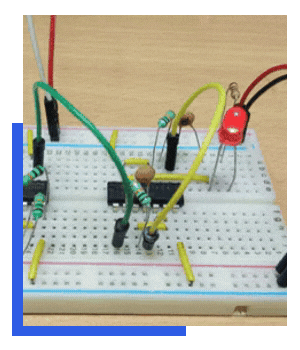
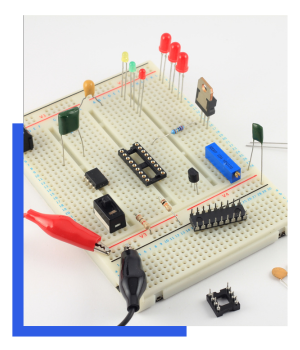
Short & sweet 164 Pages
I personally don’t like lengthy books, because I find it hard to read them all. And when I don’t finish them, I have that guilt of not finishing something. That is why I combined my 4 years of engineering and many years of experience in 164 pages. These pages packed with useful information & ready to take action materials.
FUN Activities
I am a huge fan of creative activities. In this book, we will be doing activities in almost every section that will make you think outside the box. Don’t worry, they will be beginner-friendly.

Book interior
I wanted a book that is full of diagrams. I don’t know but concepts gets way too easy when there are easy expalanatory diagrams.
Book Syllabus – What Exactly You Will Learn
Make Your First Electronic Circuit is a beginner’s journey from learning the basics of electronics to building actual circuits. Each chapter in this book is carefully designed to guide you on this journey. You won’t just be reading theory; you’ll be making real progress with every chapter.
Chapter 1
Introduction to electronics
This chapter introduces core concepts like voltage, current, and Ohm’s law. You’ll understand what a circuit is, how to read a schematic, and why it’s the blueprint for every project. You’ll feel confident with the electronics fundamentals terms before moving on.
Chapter 2
Circuit components
This chapter introduces you to the main building blocks of any circuit. You’ll learn about resistors, transistors, diodes, LEDs, capacitors, Integrated Circuit (ICs), and more. By the end, you’ll understand what each circuit component does and why it’s important.
Chapter 3
Measurements and testing
Components need to be measured and tested before we use them in circuits.Here, we learn how to use a multimeter to measure voltage, current, and resistance. This chapter ensures you know how to test your components and make sure they’re working correctly.
Chapter 4
Circuit prototyping
It’s time to bring everything together and build your first working circuit. You’ll use a breadboard to connect the components and bring your circuit to life step by step. You’ll see your circuit in action—proof that you’ve built something real. By the end, you’ll have successfully made your FIRST ELECTRONIC CIRCUIT from scratch.
Chapter 5
Circuit troubleshooting
Not every circuit works perfectly the first time, but that’s part of the learning process. This chapter walks you through common problems and shows how to troubleshoot issues like loose connections or reversed components. You’ll learn to fix your circuit and make it work smoothly.
Table of content
It took me a long time to structure everything in the following manner. Each topic lays the foundation for the other. And everything flows in a story making electronics learning fun and engaging. You complete one chapter and you will have the curiosity what will happen in the next chapter.
Author
Let me introduce myself

Muhammad Abbas
Electronics Engineer
Loves electronic circuits & play badminton
Hi everyone! I hope you are doing great & living life to its fullest. I am Abbas – your brother for this amazing and exciting book, “Make your first electronic circuit”.
I just wish there is a way that in a few lines I can totally explain myself and let you truly know me. Because as human or maybe this is just me, I really like to know a person well enough before I invest my time in that person. But as humans, what we can do our best is to try our best. And I will try my best here to give as much about myself as possible.
Buying my book is Risk-free
You have 30-day Money-back guarantee
My main goal for this book is to teach & help you learn electronics basics. If this is not helping you, then I really don’t need your money. Your money is protected by a 30 day money-back guarantee.
Frequently asked questions
If you don’t see your question or left with any confusion, just contact me. I will answer that for you. Don’t hesistate to ask me.
It is important to make a decision today – Price Will Go Up SooN ..
I sincerely thank all of you to make it this far. This means so much to me. And if you think that this book is perfect for you, then please give it a try. I have so much to teach you. If you put this decision off for now, you could miss out on low price opportunity. The book is at its lowest price tag now and I will soon increase it. Keep in mind that this isn’t some scarcity marketing tactic. I truly mean it. Buy now, and I see you in the book with a beautiful smile.

